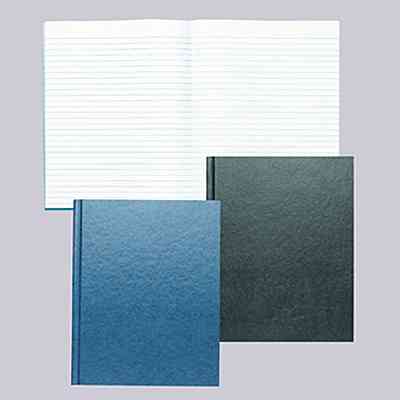Department of Physics and Computer Science
Lab Notebook
Each student is required to maintain a lab notebook which
contains all answers to prelab requirements, all experimental
results including data, formulas, calculations, circuit
diagrams, circuit analysis, graphs, etc. The lab
notebook
must be a bound book with sewn-in pages; spiral bound and
loose leaf notebooks are not acceptable. Books with
hard
or soft covers are both acceptable.
- Maintaining an effective lab notebook is a surprisingly
difficult skill to master. Scientists and engineers engaged
in research and development are required to maintain lab
notebooks to prove who did the work, when it was done, and
what was done. Companies and research labs usually have
quite stringent notebook requirements, e.g.
-
Lab Notebook Tips [Office of
Intellectual Property Management, Oklahoma State
University],

For any course where required, you will maintain notebooks
according to the
requirements listed below.
Format
- The lab notebook must be a bound book with sewn-in pages
(spiral bound and loose leaf notebooks are not acceptable) and
consecutively numbered pages. If the pages are not numbered when
you buy the notebook, number them (every page) before using it.
Books that include graph paper can simplify drawing circuits,
setting up tables to record data, and graphing data but are not
required.
- All entries in the lab notebook must be in pen.
- Notebook entries must be legible but the book will not
necessarily be neat or tidy.
- At the top of the first page of the lab notebook or on the
info page at the front of some lab notebooks, write your name,
the course number and course name. In addition, we suggest that
you add your email address and your telephone number so that the
book can be returned if you misplace it.
- Reserve the next few pages for a Table of Contents. Every
session (prelab, lab, postlab) should have an entry in the Table
of Contents that includes the name of the lab, the session type,
and the starting page number.
- Every session should start on a new page. At the top of the
first page of a session, write the date, the name of the lab, and
the session type.
- Use all pages consecutively. Leave no blank pages. If you
accidentally skip a page, put a single diagonal line through the
page. Do not tear pages out.
- If you make a mistake, draw a single line through it, leaving
it legible. Do not use whiteout; do not scratch it out.
Sometimes, "mistakes" turn out not to be
incorrect.
- Insert no loose pages. Occasionally, we may recommend that
you tape/glue in some reference material. Initial and date across
one corner of the paper that you glue in.
- Sign at the bottom of the last page after you are done for
the day (e.g. end of prelab, end of lab session).
- The lab instructor will sign your book
- at the start of the lab to acknowledge that the prelab
was completed before the lab
- at the end of the lab session.
Contents
Your lab notebook will be in a journal or diary format with
experimental setups, observations, diagrams, calculations, graphs
entered in the chronological order they were executed. This
format is typical for a research lab notebook. Take a look at
two examples:
-
annotated extracts from Professor (Emeritus) R.E. Azuma's lab
notebook . Department of Physics, University of Toronto,
- Alexander
Graham Bell's lab notebook; see the entry for March 10,
1876 describing his first successful experiment with the
telephone.
Your lab notebook should be detailed enough to allow someone
else to duplicate your work at a later time. It should contain
enough detail so that you could write an effective lab report after
the lab. The observations and sketches should be clear, should
define all quantities with units of measurement, and if
appropriate, should include how measurement equipment was wired up.
Record the type of equipment used to make the measurements and the
settings used. Apparent inconsistencies in your results may be a
function of the equipment used or the range selected. This is also
important for determining measurement error.
Write all measurements immediately after they are made. As you
measure a value consider whether it is consistent with your other
data and your expectations. Note any suspicious data for further
follow-up.
If the experimental procedure asks you to make calculations
during the experiment, do them while you are doing the experiment.
Do not leave them until later. When doing calculations always
include the formula. Some calculations may be a prelab requirement,
some may be an experimental requirement and some may be a postlab
requirement.
Do not underestimate how rapidly you will
forget experimental details.
Grading
You lab notebook will be graded with respect to the instructions
provided in this document. Your lab notebook will be randomly spot
checked during the lab. You may also be required to submit your lab
book intermittently to be marked. Some of the grading methods may
be subtle; for example, you may be required to retrieve information
from your lab book a month after it was originally entered.
Wilfrid Laurier University
© 2019 Wilfrid Laurier University





